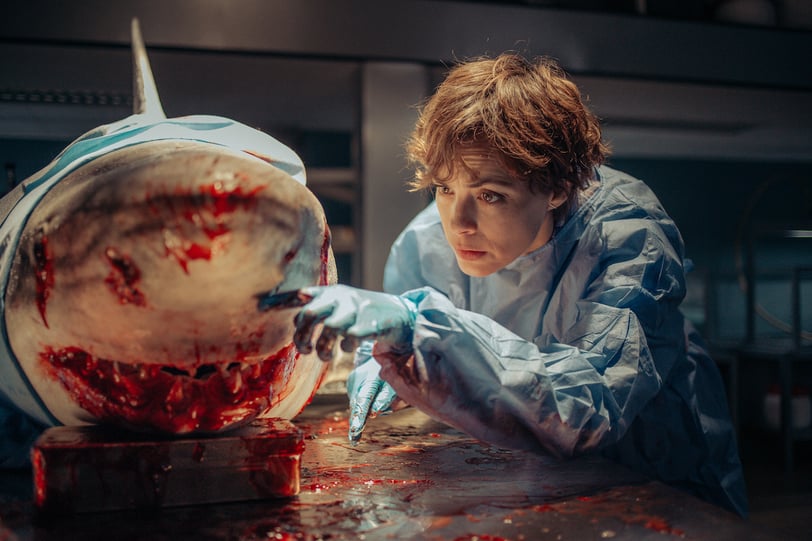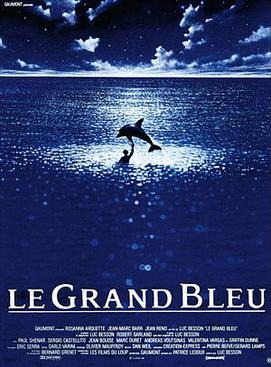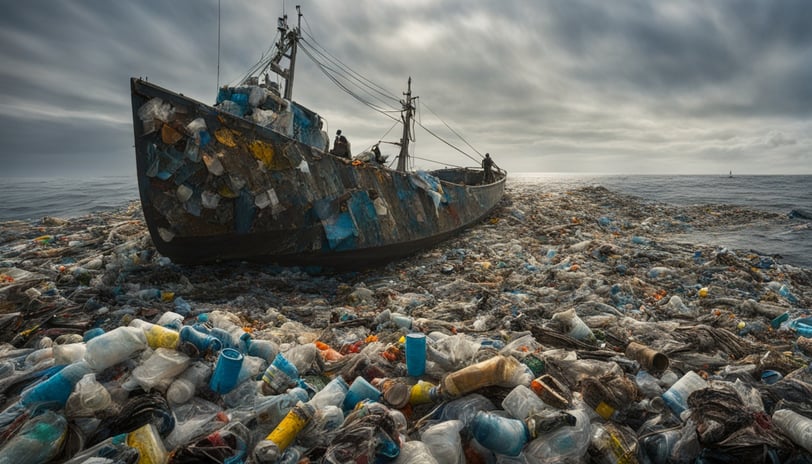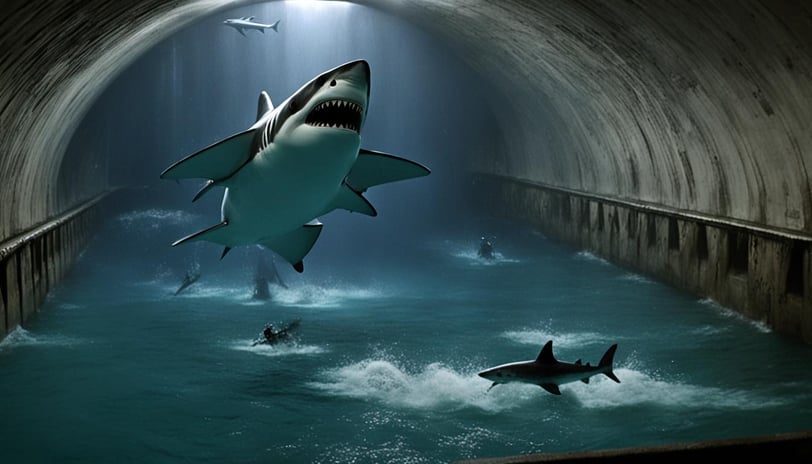8 “Under Paris” Easter Eggs You Didn’t Catch in this Shark-Infested Netflix Drama


Netflix: Under Paris
"Under Paris" (Sous la Seine) has taken the world by storm with its unique blend of horror, thriller, and environmental commentary. As viewers dive into this shark-infested adventure, many might miss the intricate easter eggs and hidden details peppered throughout the film.
In this article, we’ll uncover 8 of the most fascinating easter eggs and hidden details you might have missed. Additionally, we’ll delve into the behind-the-scenes insights and speculations over a sequel or spinoff.
1. Lilith’s Name
One of the most intriguing easter eggs in "Under Paris" is the name of the central shark antagonist, Lilith. This name is a direct reference to the biblical figure Lilith, often associated with darkness, danger, and chaos.
In various mythologies, Lilith is depicted as a demon or a night creature, which parallels the monstrous and predatory nature of the shark in the film. By naming the shark Lilith, the filmmakers infuse the character with a rich symbolic background, hinting at themes of vengeance and the primal forces of nature.
2. Homage to French Cinema


Le Grand Bleu theatrical poster
The movie pays tribute to classic French cinema in subtle but meaningful ways. One notable example is a brief scene featuring a poster for "Le Grand Bleu" (The Big Blue) in the background of an aquarium sequence.
This iconic film, directed by Luc Besson, is a beloved French aquatic drama that resonates thematically with "Under Paris." By including this poster, the filmmakers acknowledge their cinematic heritage and draw a parallel between the two films’ exploration of the ocean’s mysteries and dangers.
3. French Revolutionaries in the Catacombs
"Under Paris" cleverly incorporates historical references within the eerie catacomb scenes. As Sophia and her team navigate these underground passages, attentive viewers might notice graffiti and carvings that reference notable French revolutionaries and historical figures interred in the catacombs.
Names like Robespierre and Danton appear subtly on the walls, grounding the film’s fictional horror in real Parisian history. These details not only add authenticity to the setting but also create a chilling juxtaposition between the city’s revolutionary past and the present terror of the shark attacks.
4. Director’s Cameo
In "Under Paris," director Xavier Gens makes a brief yet memorable cameo appearance. Sharp-eyed viewers can spot him as a street artist sketching sharks near the Seine. This subtle inclusion not only serves as a fun easter egg for fans familiar with his work but also adds a layer of meta-commentary to the film.
By depicting himself as an artist within the narrative, Gens highlights the creative process behind the movie and the blending of reality with fiction. This cameo is a nod to the tradition of directors making appearances in their films, much like Alfred Hitchcock's famous cameos, adding an extra layer of enjoyment for cinephiles.
5. Tribute to "Jaws"
The Netflix thriller includes several subtle tributes to the iconic shark film "Jaws.” One notable homage is a scene where a character is seen reading Peter Benchley’s novel "Jaws," directly referencing the source material of the 1975 film. Additionally, elements of the soundtrack subtly mimic John Williams' iconic "Jaws" theme, creating an auditory link between the two movies. These tributes serve not only to honor the pioneering shark thriller but also to position "Under Paris" within a broader cinematic context, acknowledging its roots while crafting its own unique story.
6. Classical Music Cues
"Under Paris" utilizes classical French music to enhance its atmosphere and deepen the emotional impact of key scenes. For instance, the film features Camille Saint-Saëns' "Danse Macabre" during a particularly intense shark attack, aligning the chaotic visuals with the eerie, rapid pace of the music.
Additionally, Claude Debussy's "Clair de Lune" is used in a poignant moment, underscoring the emotional weight of Sophia’s grief and determination. These classical music cues not only enrich the film's auditory landscape but also provide a sophisticated nod to French cultural heritage, creating a deeper connection with the audience
7. Great Pacific Garbage Patch


The movie opens with a stark depiction of the Great Pacific Garbage Patch, which is a real environmental disaster in the North Pacific Ocean, consisting of large amounts of floating plastic waste. The protagonist, Sophia, and her team are initially shown studying this vast accumulation of debris, which sets the stage for the introduction of Lilith, the mutant shark.
The depiction of the Garbage Patch serves as a grim reminder of human negligence and its consequences, framing the shark’s mutation and migration as a direct result of environmental degradation. This element of the film draws attention to a critical global issue, making the horror more relevant and impactful.
8. Shark Movie Humor


"Under Paris" deftly deploys over-the-top humor and political satire, drawing clear influence from the "Sharknado" series. The film’s blend of exaggerated scenarios and moments of levity amidst the terror is reminiscent of "Sharknado’s" approach, where absurdity and horror coexist. This is evident in scenes where characters comically slip into shark-infested waters or react with exaggerated panic, injecting humor into the narrative and providing a counterbalance to the intense shark attacks.
The film also features a sharp satirical portrayal of the Parisian mayor, a character who embodies the “Shark Movie Mayor” trope. This mayor prioritizes economic interests and public events, such as the Paris Triathlon, over the safety of citizens, despite clear evidence of the shark threat. The mayor’s ignorance and arrogance are portrayed with a comedic touch, enhancing the film’s humor while delivering a pointed social commentary.
Behind the Camera: The Production of Under Paris
The film was primarily shot on location in Paris, France, utilizing the iconic Seine River as a central setting. The production team faced significant challenges, especially considering the Seine had been off-limits for swimming since 1923. However, with the upcoming Paris Olympics, efforts to clean the river allowed for some scenes to be filmed in and around this historic waterway.
For the intricate underwater sequences and visual effects, the production team turned to advanced facilities in Brussels, Belgium, and Alicante, Spain. Lites Studios in Brussels provided state-of-the-art water tanks and FX equipment, capable of simulating waves and various underwater conditions. Similarly, Ciudad de la Luz in Alicante, known for its expertise in underwater effects, was used to create realistic shark scenes and other aquatic environments.
Director Xavier Gens, known for his work in horror, meticulously planned these sequences to blend practical effects with CGI, ensuring a seamless and immersive experience. The visual effects team, led by VFX Supervisor Arnaud Fouquet, played a crucial role in bringing the menacing shark, Lilith, to life. This involved a combination of animatronics, CGI, and real footage to create the terrifying yet believable shark attacks that drive the film's narrative.
Under Paris Sequel or Spinoff?
Given the film’s open-ended conclusion and the nature of its storyline, there has been considerable speculation about a potential sequel or spinoff for "Under Paris." The movie ends with Paris submerged and Lilith’s offspring thriving, suggesting a continuation of the shark menace in new locations or through new challenges. This unresolved ending naturally paves the way for future installments, keeping viewers eager for more.
Director Xavier Gens has hinted at the possibility of exploring new cities or expanding the narrative to include other environmental themes. The film’s critical and commercial success also makes a sequel more likely, as audiences have shown a keen interest in the unique blend of horror, environmental commentary, and political satire that "Under Paris" offers.
Actors Bérénice Bejo and Léa Léviant have expressed enthusiasm for returning to their roles, with Bejo particularly interested in further exploring her character Sophia’s complex relationship with the shark and the broader ecological implications. This character-driven approach could provide a rich foundation for future stories, whether through direct sequels or related spinoffs focusing on different aspects of the environmental crisis depicted in the film.
